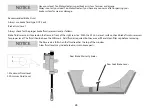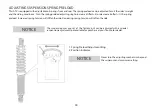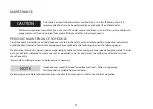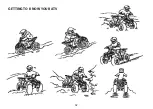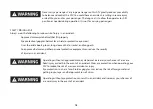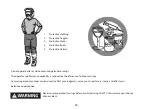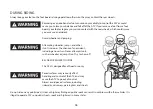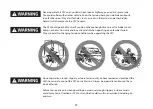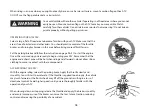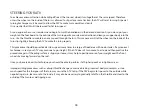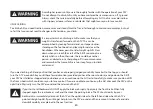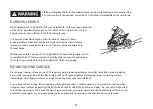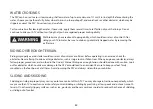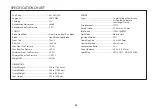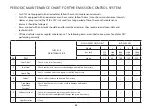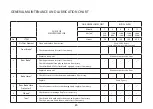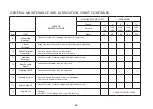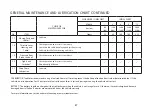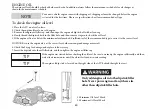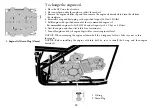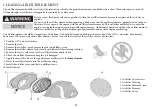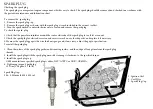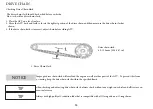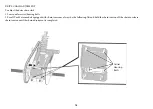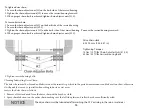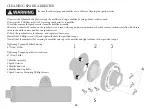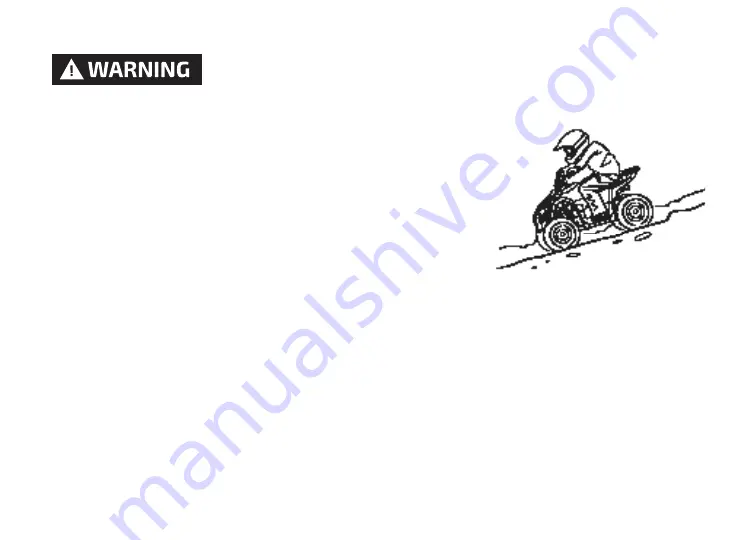
Stalling, rolling backwards or improperly dismounting while climbing a hill could result in
ATV overturning. If you cannot control the ATV, dismount immediately on the uphill side.
DOWNHILL RIDING
When riding your ATV downhill, shift your weight as far to the rear and uphill side
of the ATV as possible. Move back on the seat and sit with your arms straight.
Engine compression will do most of the braking for you.
Use caution while descending a hill with loose or slippery surfaces.
Braking ability and traction may be adv
ersely aff
ected by these surfaces.
Improper braking may also cause a loss of traction. Gradually apply only
the rear brake.
Whenever possible, ride your ATV straight downhill. Avoid sharp angles which
could allow the ATV to tip or roll over. Carefully choose your path and ride no
faster than you will be able to react to obstacles which may appear.
RIDING SLOPING SURFACE
Traversing a sloping surface on your ATV requires you to properly position your weight to maintain proper balance.
Be sure that you have learned the basic riding skills on flat ground before attempting to cross a sloping surface.
Avoid slopes with slippery surfaces or rough terrain that may upset your balance.
As you travel across a slope, lean your body in the uphill direction. It may be necessary to correct the steering when
riding on loose surfaces by pointing the front wheels slightly uphill. When riding on slopes, be sure not to make sharp
turns either up or down hill. If your ATV does begin to tip over, gradually steer in the downhill direction if there are no
obstacles in your path. As you regain proper balance, gradually steer again in the direction you wish to travel.
41
Summary of Contents for G125
Page 6: ...LOCATION OF THE WARNING AND SPECIFICATION LABELS 1 2 3 5 1 2 3 4 5 4 ...
Page 42: ...GETTING TO KNOW YOUR ATV 32 ...
Page 69: ...59 ...
Page 70: ...60 ...
Page 76: ...Find important product information and how to videos on our website www taomotor com ...
Page 77: ......


